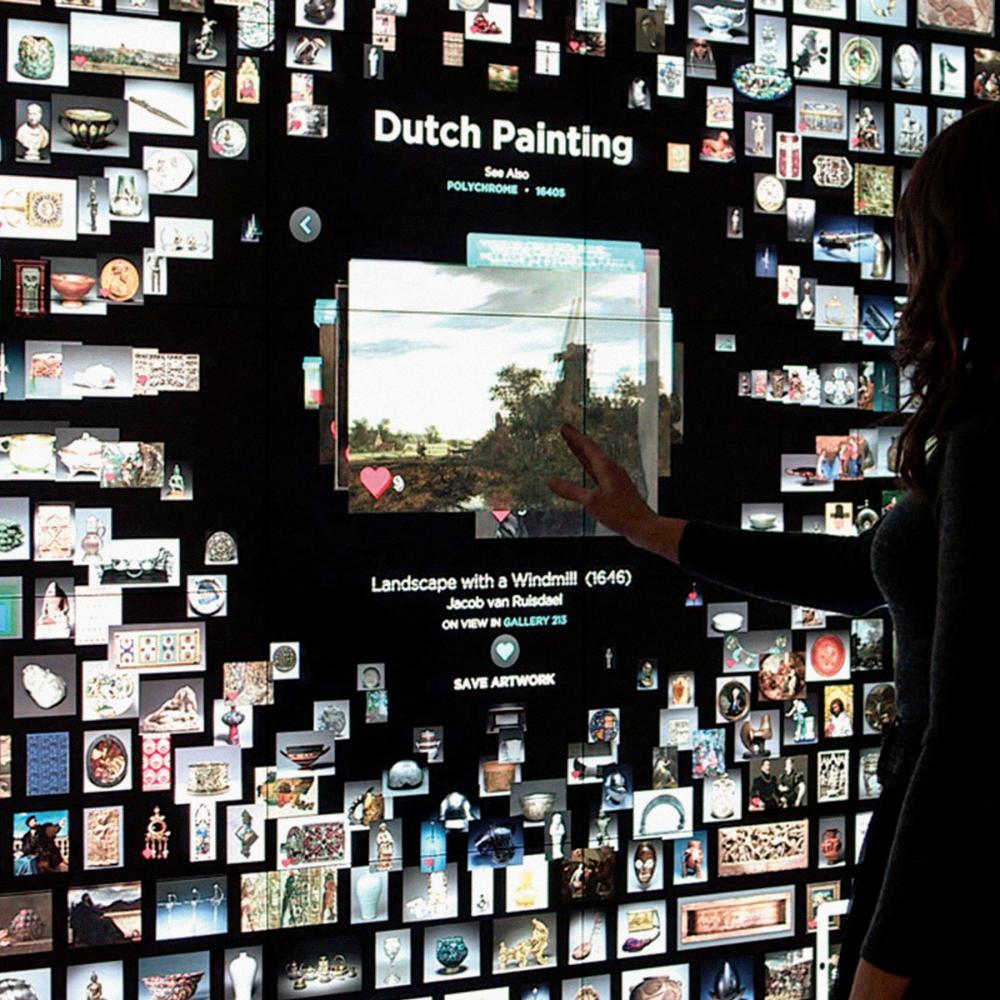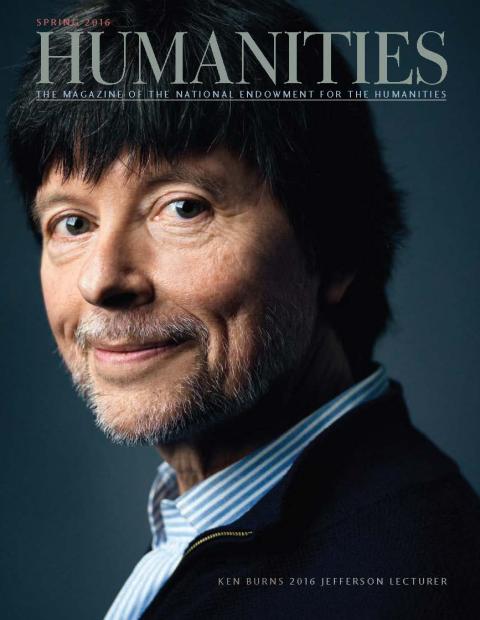When Americans stood in line for hours to see King Tut in the 1970s, a new kind of museum exhibition took hold: the blockbuster. Featuring spectacular artifacts from the tomb of the ancient Egyptian pharaoh, the “Treasures of Tutankhamun” traveled to six cities across the United States between November 1976 and April 1979, and drew millions of people into museums, many for the first time.
The National Endowment for the Humanities made several grants to support the national tour of the “King Tut” exhibition. In the decades that followed, the Endowment went on to fund major exhibitions at the nation’s leading art and history museums. Popular and critically acclaimed shows such as “Impressionism” at the Metropolitan Museum of Art, fresh interpretations of African art at Chicago’s Field Museum and UCLA’s Fowler Museum, and the international traveling show “Mexico: Splendors of Thirty Centuries,” all funded by NEH, typified the era’s emphasis on big, definitive art exhibitions. In a parallel development, history museums in Chicago, Atlanta, New York, Minneapolis, and Richmond, mounted reinterpretations—also supported by NEH—of Lincoln and the Civil War and groundbreaking social history exhibitions exploring issues of race, immigration, and gender.
Large-scale, artifact-rich exhibitions like these, whether permanent reinstallations of major collections or traveling shows that toured to five or six cities, were the heart of the museum enterprise for more than 30 years. Now, however, the field is changing, and it’s time for NEH to change with it.
While exhibitions were traditionally the mainstay of the museum field, many organizations now see them as only the beginning point of a larger conversation with the public. Leaders in the field began moving in this direction over a decade ago, giving new priority to community engagement and placing less emphasis on large-scale exhibitions. There are many reasons for this, not least of which is that exhibitions are expensive to produce and expensive to put on tour. A national exhibition tour, perhaps conceivable in the 1980s, is today beyond the reach of most institutions.
More fundamentally, the change speaks to a shift in the relationship between a museum and its public audiences. If you walked into a large museum in the 1980s or 1990s, you would have seen galleries full of objects from the museum’s collection, carefully chosen and arranged by a curator, with a label (written in the authoritative voice of the curator) explaining what you were looking at.
Today this kind of static display seems almost antiquated. Museumgoers now have the expectation, when they walk into a museum, that they will be interacting with the content on display—curating their own virtual exhibits, sharing information about museum artifacts via social media, or participating in some kind of public dialog around issues important to them. Institutions like the Cleveland Museum of Art have pioneered new approaches to draw visitors into the curatorial process: Cleveland’s innovative Gallery One invites visitors to explore objects in the collection through a 40-foot-high touch screen. iPads in museum galleries, interactive tables, and creative uses of social media all offer visitors a more immediate and participatory role.
Museums are also realizing that if they want to bring new audiences into their institutions and reflect the diverse communities around them, they need to break down the gallery walls. Leading urban institutions such as the Oakland Museum of California, the Lower East Side Tenement Museum, and the Brooklyn Historical Society have collaborated with their communities to create exhibits that reflect the experiences of many different kinds of people. In all three cities, those exhibits have served as springboards for powerful and important community dialog.
It’s not only that museums are changing how they think about their audiences; it’s also that their audiences are changing how they think about museums. The role of the museum is being reimagined from within and without, amounting to an epic shift in expectations. Their dedication to art, history, and culture remains, but their social function is different from what it was.
The cultural institutions that NEH supports are increasingly called upon to serve as “town halls,” spaces where citizens can come together to talk and debate issues of significance to their communities. Yet, until quite recently, NEH’s grant guidelines did not speak directly to this vital role for museums, libraries, and historical societies.
In the NEH Division of Public Programs, we have been reenvisioning our grant programs to respond to these changes. With the rollout of Digital Projects for the Public grants in 2014, we made a commitment to foster the use of new digital technologies in museum spaces. Through this grant competition we’ve supported humanities-based games, mobile applications, and other interactive platforms that offer a myriad of opportunities for active public involvement.
Our newest grant program—coming in June—speaks directly to the role of museums as conveners of important public dialogs. Community Conversation grants will invite public discussion projects that engage diverse residents in creatively addressing contemporary challenges, guided by the perspectives of the humanities. Projects should draw on the power of the humanities to offer useful perspectives on difficult and complex questions facing Americans as members of communities and as citizens—such as inequality, immigration, health, and aging. Applicants must propose intensive, yearlong explorations of a single humanities theme or question across multiple platforms. Those might include, for example, an oral history project that engages high school students in documenting the experiences of recent immigrants to their region, a series of podcasts and radio interviews, and a community-curated exhibit.
Alongside the new Community Conversation option, the division will also continue NEH’s long-standing commitments in the museum field. Historic Places grants will support sites that are significant in U.S. history. And museums, libraries, and other organizations may still apply to the division for exhibitions grants. Museum objects continue to fascinate and inspire visitors. They carry the weight of history and have an authenticity that is powerful. As long as there is a demand in the field for major traveling or permanent exhibitions, NEH will continue to support them. But as of late it has been important to track how museum practice has begun to depart from our grantmaking assumptions and to catch up.
Interestingly, where museums are headed is not so different from where NEH has been headed, looking to connect our traditional support for classic humanities endeavors with the creative energy of the public square. Through the Endowment-wide initiative Common Good, NEH is supporting fellowships to help scholars write books for the broader public, programs for returning veterans, efforts to help Americans archive their own personal histories, and public forums about challenging contemporary issues. Like our new wave of museum grants, these efforts draw a line from the humanities to local communities around the country—and, ultimately, we hope, to a sense of community writ large.


